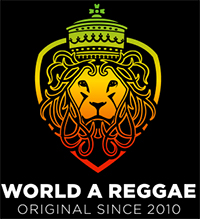A dandy in a genre stacked with flamboyant characters, Bunny Lee was a flashy dresser with a penchant for drama. There are countless yarns about the man known as Striker, but no one doubts his value as a producer of groundbreaking songs.
Fans and history buffs will get an opportunity to hear and see his story when the Bunny Lee Museum officially opens in February, celebrated as Reggae Month in Jamaica. Step into the vibrant world of reggae music and Jamaican culture at the Bunny Lee Museum and Recording Studio located in the Duhaney Park, Kingston 20 community of Kingston, Jamaica, the facility houses a trove of memorabilia — from Lee’s colourful costumes to instruments owned by musicians he worked with and studio equipment classic songs like Move Outa Babylon and Better Must Come were recorded on.

When his father died in October, 2020 at age 79, Bunny Lee Jr. was determined to complete the museum that was once Bunny Senior’s studio. It had a soft launch on July 1 and attracted noted figures such as his protege, Lloyd “King Jammy” James, percussionist Bongo Herman, and Craigy T of TOK.
“The museum is deeply personal to me. It’s more than just a tribute to my father—it’s a way to preserve his influence on Jamaican music and the world. Bunny Lee wasn’t just a producer; he was a storyteller, a visionary, and a mentor to so many,” said Lee Junior. “This museum is a way to keep his legacy alive, sharing the culture and the music he helped shape with future generations. It also feels like a way of saying thank you to all the people who loved and supported his work. For me, it’s about honouring my father’s journey and ensuring his contributions to reggae and dub are remembered and celebrated.”
Visitors will see walls adorned by paintings of Lee and his contemporaries including fellow producers including Clement Dodd, Duke Reid, Prince Buster, Leslie Kong, Lee “Scratch” Perry, and Chris Blackwell. There are also instruments that belonged to bass guitarist Robbie Shakespeare, a key member of Lee’s Aggrovators band; guitarist Jerome “Jah Jerry” Haynes of The Skatalites, and keyboardist Jackie Mittoo.

Born Edward O’Sullivan Lee, Bunny Lee produced a number of hit songs during the late 1960s including Bangarang by Lester Sterling and Stranger Cole, Let Me Go Girl (Slim Smith and The Uniques) and Music Field by Roy Shirley.
In the 1970s roots-reggae era, Lee produced hits by Johnny Clarke, including None Shall Escape The Judgement and Rock With me Baby; Max Romeo (Let The Power Fall on I), Stick by Me (John Holt), Better Must Come (Delroy Wilson), Zion Gate (Horace Andy) and I Am The Gorgon by Cornel Campbell.
That considerable legacy will be officially on display as of February.
“We’re still on track for the launch during Reggae Month, which is such a fitting time to celebrate my father’s legacy. Reggae Month is a powerful moment to recognise the contributions of all the greats who built Jamaican music, and having the Bunny Lee Museum officially open during that time feels right. We’re working closely with partners and the Ministry of Culture to make sure it’s a special and memorable event, and we’re excited to share it with the world,” said Bunny Lee Junior.
By Howard Campbell





